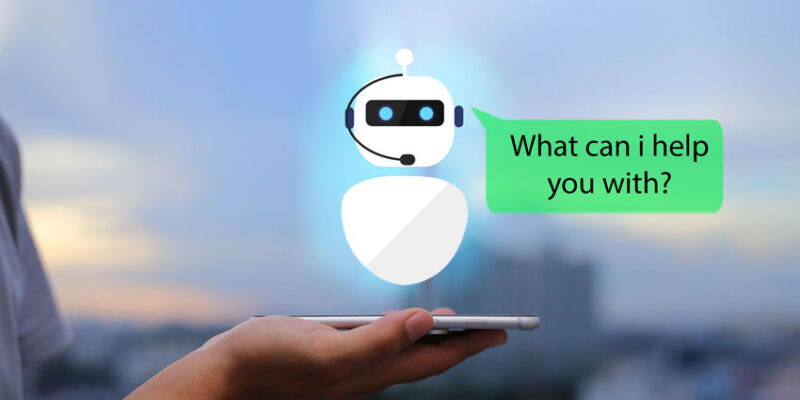
When you manage a company, you want as many people as possible to be aware of it and understand why it is so successful. This is why advertising is so crucial. Your marketing plan should have the goal of spreading the word, encouraging people to learn more, and eventually increasing sales. It’s not easy to create a successful marketing strategy, but one of the finest things you can do is make your plans unique.
Bespoke tailoring is the skill of giving your products or services a distinct personality. A personalized marketing approach can help your business engage with customers in sales. You can communicate vital information about your company with bespoke branding products, such as your mission vision, values, and priorities, to mention a few.
When launching a product or advertising an event, bespoke goods can also help retain, especially when combined with branded merchandise and a call to action. These strategies may be crucial to successful customized marketing.
1. Use AI

Using an e-commerce integration with your email marketing provider is a smart strategy to automate and create the use of bespoke items. Because you aim to reach a big consumer base, employing customized things when selling physical products to customers becomes tough. An AI tool, on the other hand, can quickly process large amounts of data. Customers will be classified based on purchase behavior and email exchanges, generated automatically.
AI has also been utilized to create intelligent chatbots that help improve customers’ online experiences. When clients can’t find something on the internet or have inquiries about the company, chatbots can help right away. AI chatbots are beginning to address this issue by incorporating real-time customer data into interactions, allowing them to provide a human touch. They’ve advanced so far in recent years that it’s difficult to tell whether you’re speaking with an AI chatbot or a real person. AI allows for more personalization than simply knowing a customer’s first name.
With so much information at your fingertips, creating tailored email marketing campaigns that provide results becomes much easier. Another advantage of AI is that it may learn from previous campaigns. The data from previous campaigns will then be used by an AI email marketing tool to optimize future campaigns. Furthermore, you will receive detailed reports detailing what works and what does not.
2. Collect Data
Gather any relevant information about your customers that will help you serve them bespoke items. Gender, age group, locality, and income level are examples of demographic data. Shopping behavior, such as purchase history and spending habits, is another important picture element. Due to third-party monitoring restrictions, this necessitates a heavy reliance on first-party data.
You can acquire deep insights into your audience by collecting information about them through website visits, social media involvement, email conversations, etc. It will be easier to engage with them in ways that make them thrilled to interact with your business if you can better grasp who they are, what they want, and how they prefer to communicate.
High-quality data is necessary for gaining a better knowledge of each customer. It’s crucial to set the groundwork and follow the processes in the correct order. Gather all information sources first (anonymous and known data). It’s also critical to have detailed transactional and behavioral data. You’ll want to know everything there is to know about each consumer while doing it respectfully and ethically.
3. Add Emotions

Customers value and respond positively to businesses that humanly communicate with them. But utilizing a customer’s first name in emails isn’t enough. By including the name and photo of the person with whom they’re speaking, you may make the experience feel more personal.
Customers will feel more comfortable and connected if your firm has a real, living face. They may also be more willing to give you personal information. Use a dedicated representative if you have the option. There’s nothing like genuine customer service from someone with whom your customers can form long-term bonds.
Another great method to feel less like a distant organization and more like a friend is to include emotion and honesty in your communications and branding. Many organizations, for example, would send emails to their audiences during the coronavirus pandemic to check in.
4. Target Based On The Visitor’s Location
There’s something special about people. We like to link ourselves with places and demographic identities, and we enjoy living in cultures and communities. Identifying your consumers’ geo-location will provide information about their culture, language, ideologies, and much more. Use this information to produce and serve relevant content so that your geo-friendly marketing initiatives feel more localized and trustworthy.
Allow them to consume material in their local language by referring them to location-specific retailers. You can even delve into the specifics of the location’s weather and political climate to keep them engaged with pertinent information. This appears to be a good fit for them.
5. Segmentation

Previously, segmentation was sufficient to provide a tailored experience that customers valued. The consumer was satisfied if they purchased a mug with their favorite actor splashed on it and afterward received an email from the company showing them additional things with the same theme.
However, the same email should now include mugs with the emblem of the customer’s preferred actor. The client no longer wants to be considered as part of a group of individuals who share similar interests; instead, they want to be treated as an individual with extremely precise preferences.
You can employ specially tailored product marketing techniques for your clients after dividing them into different personas or categories. It’s worth noting that the more indications you have to categorize your customers with, the more precise your personalization will be.
Conclusion
In marketing, bespoke items create the difference between successful and unsuccessful firms. Customers come first when personalization is prioritized in marketing. As long as you’re prepared to put it into practice, personalization affects your customer service, product development, and nearly every element of your organization.
Most industry experts now believe that individualized marketing is the way of the future. Using customized merchandise means prioritizing the needs of your customers. So, every now and again, try putting yourself in your customer’s shoes to see things from their point of view. This will be quite beneficial to your marketing approach.



